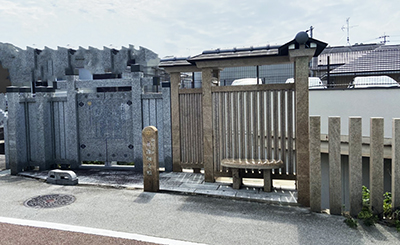Slate Stone of Aburaya (oil merchants)
(oil merchants)

At the beginning, the Aburaya had a water mill inside the residence, which was used for pressing the oil as the main occupation. It is not certain when they started the ryokan business (Japanese style hotel), but in the Edo period they already hosted a lot of travelers as the preferential accommodation inn for going to Koyasan. The water mill remained in the garden as a symbol of the oil pressing business and was a feature of this ryokan. In the year 23 of the Meiji period (1890), at the foot of the Eboshigata Castle Ruins, a hot spring was discovered which brough the opportunity to make a restart as “Kinkei Onsen Aburaya”. In the year 4 of the Taisho period (1915), the Kōya railways (now Nankai Kōya line) services were started. Thus, visitors going to the temples on foot diminished and in Mikkaichi area many inns and oil shops had to discontinue their business. Aburaya continued their business until the year 50 of the Showa period. In the Bakumatsu period (end of the Bakufu), in the year 4 of the Bunkyu period (1863), with the court nobleman Nakayama Tadamitsu as the commander-in-chief, the followers of the movement sonno jōi (revere the Emperor, expel the barbarians) set up the Tenchugumi, and stayed at the Aburaya.
(quote from “KŌYA KAIDO” published by the Kawachinagano City Board of Education)